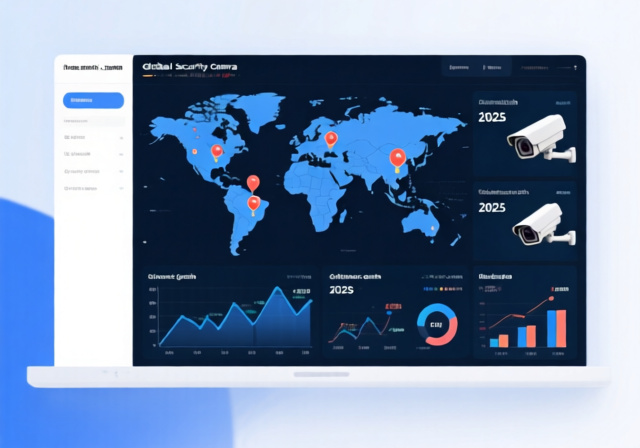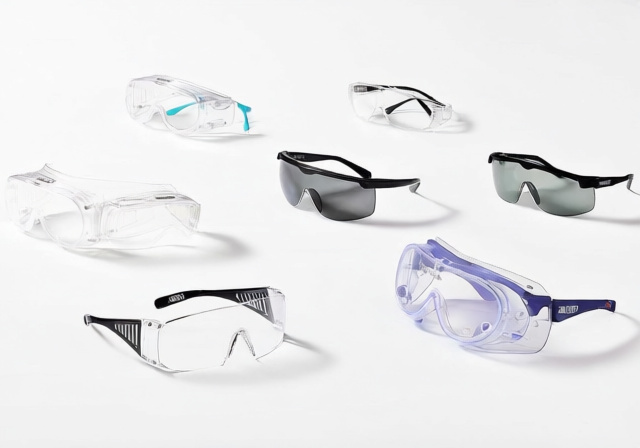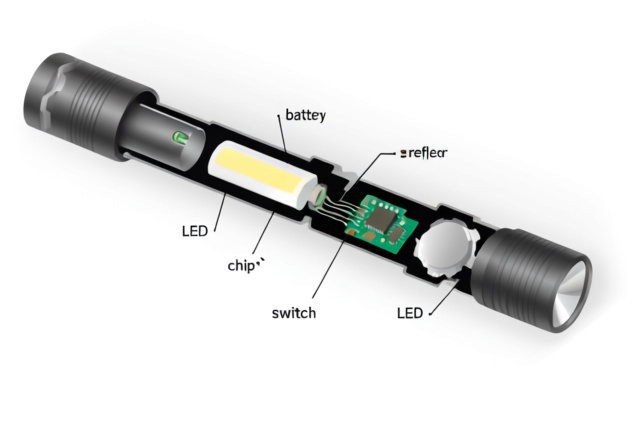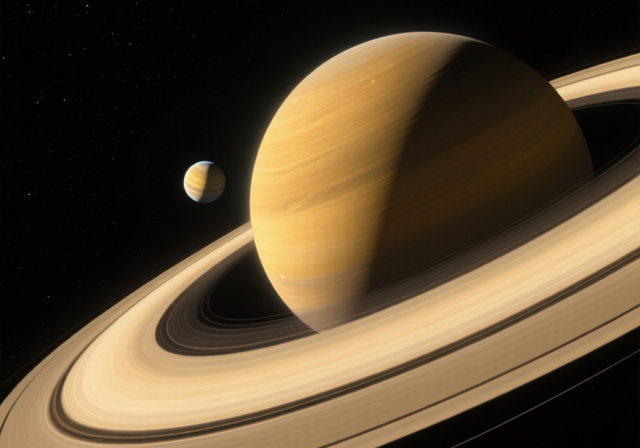

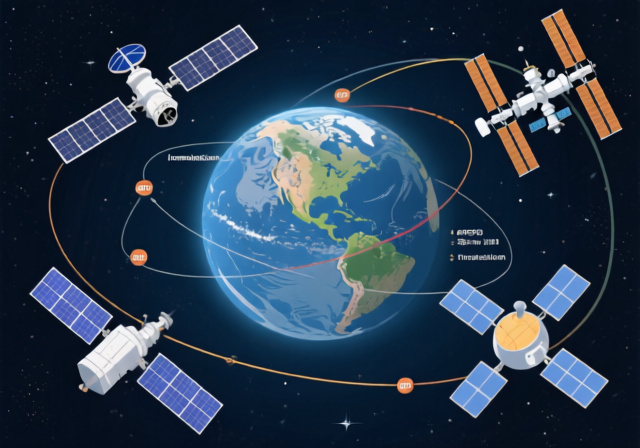

Ever looked up at the night sky and wondered about those tiny moving lights that aren’t stars or planes? Those are satellites – humanity’s eyes and ears in space, working silently above us every single day. With over 10,000 active satellites currently orbiting Earth and another 3,000 dead ones floating around, space has become quite crowded since the first satellite launched in 1957.
Satellites are revolutionizing everything from how we navigate to how we predict weather, and they’ve become so essential to modern life that we’d literally be lost without them (seriously, try using GPS without satellites!). These incredible machines range from the size of a coffee mug to the size of a school bus, all circling Earth at speeds that would make your head spin.
I’ve spent years studying these amazing space machines, and I’m constantly amazed by how much they impact our daily lives. From the TV signals bringing you this content to the weather app on your phone, satellites are working 24/7 to keep our modern world running smoothly.
Whether you’re a student working on a school project, a parent answering curious questions, or just someone fascinated by space technology, this comprehensive guide will give you all the essential satellite facts you need. We’ll explore everything from basic definitions to mind-blowing statistics, practical applications, and even how you can spot satellites from your own backyard.
A satellite is essentially any object that orbits around a larger object in space. That’s it – pretty simple, right? But what makes satellites so fascinating is the distinction between natural and artificial ones. Our Moon is Earth’s only natural satellite, gracefully orbiting our planet every 27.3 days. Artificial satellites, on the other hand, are human-made machines specifically designed and launched into orbit for various purposes.
Think of artificial satellites as sophisticated space robots built to perform specific jobs. These technological marvels typically consist of several key components working together in perfect harmony. The main body houses all the electronic systems and scientific instruments, while solar panels extend like wings to capture sunlight and convert it into electricity. Most satellites also have antennas for communication, thrusters for position adjustments, and various sensors or cameras depending on their mission.
What’s truly remarkable is how these machines can operate for years in the harsh environment of space. They endure extreme temperature swings, radiation, and the vacuum of space while continuing to perform their tasks with incredible precision. Some satellites, like Vanguard 1 launched in 1958, have been orbiting for over 60 years and are still up there – making it the oldest human-made object in space!
Modern satellites range from massive communication satellites the size of a small bus to tiny CubeSats that could fit in your backpack. Despite their different sizes, they all share the same fundamental purpose: to provide services and gather information from their unique vantage point above Earth’s atmosphere.
The satellite era began dramatically on October 4, 1957, when the Soviet Union launched Sputnik 1 – a beach ball-sized sphere with four long antennas that transmitted radio pulses back to Earth. This simple metal sphere, weighing just 184 pounds, changed everything and triggered the Space Race between the Soviet Union and United States. I’ve seen old footage of people gathering around radios to hear Sputnik’s distinctive “beep-beep-beep” signals, and it still gives me chills thinking about how momentous that moment was.
America responded quickly with Explorer 1 in January 1958, which discovered the Van Allen radiation belts – zones of charged particles trapped by Earth’s magnetic field. This was a major scientific discovery that wouldn’t have been possible without satellite observations. Throughout the 1960s, satellites evolved rapidly from simple radio transmitters to sophisticated platforms carrying cameras, scientific instruments, and communication equipment.
The 1970s and 1980s saw satellites become essential parts of our daily infrastructure. Landsat 1, launched in 1972, began systematically photographing Earth’s surface, revolutionizing everything from agriculture to urban planning. The first GPS satellites launched in 1978, though it would take decades before this technology would end up in everyone’s pocket. Communications satellites transformed global broadcasting, making live international transmissions possible for the first time.
Today, we’re in what some call the “New Space Age” with private companies like SpaceX launching thousands of satellites for their Starlink internet constellation. In 2025, we’re launching more satellites every month than were launched in entire decades during the early Space Race. It’s an incredible time for satellite technology, with innovations happening at a pace that would have seemed like science fiction just a few decades ago.
The magic of satellites comes down to one fundamental concept: orbital mechanics. Once a satellite reaches the right speed and altitude, it essentially falls around Earth continuously, never quite hitting the ground. This happens because the satellite’s forward velocity perfectly balances Earth’s gravitational pull. For a typical Low Earth Orbit (LEO) satellite at about 300 miles up, this means traveling at approximately 17,500 mph – fast enough to circle the entire planet in just 90 minutes!
Power is another critical aspect of satellite operations. Most satellites use large solar panels that convert sunlight into electricity, storing excess energy in batteries for when they’re in Earth’s shadow. Some satellites in deep space or special missions use nuclear power sources, but these are relatively rare. The efficiency of solar panels has improved dramatically over the years, with modern panels converting over 30% of sunlight into electricity.
Communication with satellites happens through radio signals sent to and from ground stations around the world. These signals travel at the speed of light but still experience slight delays depending on the satellite’s distance. For geostationary satellites 22,236 miles above Earth, there’s about a quarter-second delay each way – which is why satellite phone calls sometimes have that awkward pause.
Satellites also need to maintain their position and orientation in space, a process called station keeping. They use small thrusters that fire in precise bursts to adjust their orbit, counteracting the slight drag from Earth’s upper atmosphere and gravitational influences from the Moon and Sun. Reaction wheels – essentially high-tech spinning tops – help satellites point their instruments and antennas in the right direction without using fuel.
⚠️ Technical Note: Satellites in Low Earth Orbit experience atmospheric drag and will eventually fall back to Earth without regular orbital boosts. Most are designed to burn up completely on reentry to avoid endangering people on the ground.
Satellites operate in different orbital altitudes depending on their mission requirements, with three main categories dominating the space around Earth. Low Earth Orbit (LEO) satellites fly between 111 and 1,243 miles above Earth’s surface, making them ideal for imaging and communications due to their proximity to Earth. The International Space Station orbits in LEO, as do many Earth observation satellites and satellite constellations like Starlink.
Medium Earth Orbit (MEO) satellites operate between 1,243 and 22,223 miles altitude, with GPS satellites being the most famous examples. These satellites take about 12 hours to orbit Earth and provide excellent coverage for navigation systems. Their higher altitude means fewer satellites are needed to provide global coverage compared to LEO systems.
Geostationary Orbit (GEO) satellites sit exactly 22,236 miles above Earth’s equator, where they orbit at the same speed as Earth’s rotation. From our perspective on the ground, these satellites appear to stay fixed in one position in the sky, making them perfect for weather monitoring and communications. Most satellite TV providers use GEO satellites because they can continuously cover the same geographic area.
| Orbit Type | Altitude | Orbital Period | Main Uses | Examples |
|---|---|---|---|---|
| Low Earth Orbit (LEO) | 111-1,243 miles | 90-120 minutes | Earth imaging, internet constellations | ISS, Starlink, Hubble |
| Medium Earth Orbit (MEO) | 1,243-22,223 miles | 6-12 hours | GPS navigation, communications | GPS satellites |
| Geostationary (GEO) | 22,236 miles | 24 hours | Weather, TV broadcasting | Weather satellites, TV satellites |
Beyond these main categories, there are also specialized orbits like polar orbits (passing over Earth’s poles) and highly elliptical orbits that spend most of their time over one part of Earth. Each orbit type has unique advantages that make it suitable for specific applications, from scientific research to military surveillance.
The impact of satellites on our modern world is nothing short of revolutionary, even though most of us rarely think about them. GPS technology alone has transformed how we navigate, with over 100 million GPS receivers in use worldwide. Every time you use Google Maps or check your location on your phone, you’re accessing signals from multiple GPS satellites orbiting 12,550 miles above Earth. The system is so precise that it can determine your location within about 16 feet, and military-grade GPS is even more accurate.
Weather forecasting has been completely transformed by satellite technology. Before weather satellites, meteorologists relied on ground observations and limited data from weather balloons. Today, geostationary weather satellites provide continuous coverage of entire continents, tracking storms, monitoring temperature changes, and collecting data that has improved weather prediction accuracy by about 30% over the past few decades. I’ve noticed how much better 7-day weather forecasts have become – that’s satellite technology at work!
Satellite communications connect the entire globe, making everything from international phone calls to internet access possible in remote areas. Television signals bounce off satellites to reach homes across continents, while satellite internet brings connectivity to rural and underserved regions. In 2025, satellite constellations like Starlink are providing high-speed internet to places that never had reliable access before, closing the digital divide for millions of people.
Earth observation satellites are perhaps the unsung heroes of the satellite world. These orbiting eyes monitor climate change, track deforestation, help farmers optimize crop yields, and provide crucial data during natural disasters. After earthquakes or hurricanes, satellite imagery helps emergency responders assess damage and plan relief efforts. The images from these satellites have also revealed everything from hidden archaeological sites to illegal fishing operations, making them invaluable tools for science and conservation.
✅ Did You Know? Satellite imagery is now so detailed that it can detect objects as small as 12 inches across from space, though civilian images are typically limited to about 3 feet resolution for security reasons.
Not everything in space is working perfectly – there’s a growing problem of space debris that poses serious risks to operational satellites. Currently, there are over 100 million pieces of space debris orbiting Earth, ranging from tiny paint flecks to entire dead satellites. About 34,000 of these objects are larger than 4 inches, and even something as small as a marble traveling at orbital speeds can cause catastrophic damage to an active satellite.
The problem began with the dawn of the space age and has accelerated with increasing satellite launches. Collisions between satellites create even more debris in a dangerous chain reaction known as the Kessler Syndrome. In 2009, an active Iridium communications satellite collided with a defunct Russian satellite, creating over 2,000 trackable pieces of debris that still pose risks today.
NASA and other space agencies are actively working on solutions to the space debris problem. These include better tracking systems to predict potential collisions, satellite designs that minimize debris creation, and experimental cleanup technologies. Some proposed solutions include harpoons, nets, and even laser systems to remove or deorbit dangerous debris. Companies are also developing satellites that can capture and remove dead satellites from orbit, though these technologies are still in early stages.
The good news is that new regulations require satellite operators to plan for end-of-life disposal, usually by moving satellites to a “graveyard orbit” or ensuring they burn up in Earth’s atmosphere. Still, cleaning up the existing debris will require international cooperation and innovative engineering solutions over the coming decades.
One of the most exciting aspects of satellite technology is that you don’t need expensive equipment to observe these marvels of human engineering – just your eyes and some basic knowledge. The best time to spot satellites is shortly after sunset or before sunrise, when the sky is dark but satellites high above are still catching sunlight and appear as bright, steady points of light moving across the sky.
The International Space Station is by far the easiest and most spectacular satellite to spot. It looks like a very bright star moving steadily across the sky, typically taking 3-5 minutes to pass from horizon to horizon. NASA provides a free service called Spot the Station that sends email or text alerts when the ISS will be visible from your location. I’ve seen the ISS dozens of times, and it never gets old – especially knowing there are astronauts up there working!
For tracking other satellites, several excellent apps and websites make it easy to know what’s passing overhead. Apps like SkyView, Star Walk, or Satellite Tracker use your phone’s GPS to show you exactly where to look for specific satellites. Websites like Heavens-Above provide detailed predictions for thousands of satellites, including when they’ll appear, their brightness, and their path across the sky.
If you want to take your satellite spotting to the next level, you might want some basic optical equipment. While satellites can be seen with naked eye, binoculars can reveal more details and help you spot fainter satellites. The Celestron SkyMaster 25×70 binoculars are particularly popular among satellite observers for their combination of magnification and light-gathering ability. For more serious observation, a good telescope can even show you details of larger satellites like the ISS.
Satellite photography has become a popular hobby too, requiring just a camera with manual controls and a tripod. The technique involves taking long exposures of the sky as satellites pass overhead, creating light trails against the stars. It takes practice to get the exposure just right, but the results can be stunning – especially when you capture multiple satellites or the ISS passing through constellations.
⏰ Time Saver: The best nights for satellite viewing are during the first and last quarters of the Moon, when the sky is darker but there’s still some ambient light to help you spot satellites.
The physics behind satellite orbits is both elegant and counterintuitive. Many people think satellites need rockets to stay up, but the reality is more fascinating – satellites are essentially in constant freefall around Earth. The key is achieving the perfect balance between forward velocity and Earth’s gravitational pull. At typical LEO altitudes, satellites need to travel at about 17,500 mph to maintain orbit, while geostationary satellites move at about 6,875 mph.
What’s really interesting is how satellites use different orbits for different purposes. Polar orbits, which pass over Earth’s poles, allow satellites to eventually see the entire planet as Earth rotates beneath them. This makes them perfect for imaging and reconnaissance satellites that need complete coverage. Sun-synchronous orbits are a special type of polar orbit where the satellite passes over the same spot on Earth at the same local solar time every day – incredibly useful for consistent lighting in satellite imagery.
Highly elliptical orbits provide another interesting solution for specialized applications. These orbits take satellites high above Earth for part of their orbit (apogee) and close to Earth for another part (perigee). Russia’s Molniya satellites use these orbits to provide communications coverage over high-latitude areas where geostationary satellites appear too low on the horizon.
The mathematics of orbital mechanics is complex, but the basic principles were figured out by Johannes Kepler in the 17th century and later explained by Newton’s law of universal gravitation. Today, satellite operators constantly adjust orbits using tiny thruster burns to account for atmospheric drag, gravitational influences, and the pressure from solar radiation. It’s a delicate dance that requires precise calculations and constant monitoring to keep satellites where they need to be.
The satellite industry is experiencing an unprecedented transformation driven by commercial innovation and advancing technology. In 2025, we’re seeing the emergence of massive satellite constellations providing global internet coverage, with thousands of small satellites working together in coordinated networks. SpaceX’s Starlink alone has launched over 4,000 satellites, with plans for tens of thousands more, while competitors like Amazon’s Project Kuiper and OneWeb are building similar systems.
Miniaturization is another major trend, with satellites becoming smaller and more capable. CubeSats – standardized miniature satellites measuring just 4 inches per side – have democratized access to space, allowing universities, startups, and even developing countries to launch their own satellites. These tiny satellites can now perform tasks that once required massive, expensive spacecraft, from Earth imaging to scientific research.
Artificial intelligence is revolutionizing satellite operations, with AI-powered systems optimizing orbits, processing data onboard, and even enabling autonomous decision-making. Future satellites will be able to identify interesting phenomena in real-time and adjust their observations without human intervention. This is particularly important for Earth observation satellites monitoring disasters or environmental changes where quick response times are critical.
Perhaps most exciting are the developments in satellite servicing and manufacturing. NASA and private companies are developing technologies to refuel, repair, and upgrade satellites in orbit, extending their lifespans and reducing space debris. Some companies are even planning to manufacture satellites in space using 3D printing and other advanced techniques, eliminating the need to survive the violent forces of launch.
The environmental impact of satellites is also receiving increasing attention. New satellites are being designed with end-of-life plans that ensure they’ll burn up harmlessly in Earth’s atmosphere or move to safe graveyard orbits. Solar sail technology is being developed to help deorbit satellites without using fuel, and some satellites are even being designed to capture space debris as part of their mission.
One of the most valuable applications of satellite technology is Earth observation – using satellites to monitor and study our planet from space. The Landsat program, launched in 1972, has been continuously imaging Earth for over 50 years, creating an invaluable record of environmental change. Scientists use this data to track everything from deforestation and urban growth to glacier retreat and agricultural patterns.
Modern Earth observation satellites are incredibly sophisticated, using multispectral and hyperspectral imaging to capture data beyond what human eyes can see. These satellites can detect plant health, water quality, atmospheric gases, and even underground resources. The European Space Agency’s Sentinel satellites, part of the Copernicus program, provide free, open access to Earth observation data that’s used for everything from climate research to disaster response.
Commercial Earth observation companies like Planet Labs operate constellations of small satellites that can image the entire Earth’s land surface daily. This frequent revisit time allows for near-real-time monitoring of changes on Earth’s surface, which has applications in agriculture, urban planning, disaster response, and environmental monitoring. During natural disasters like hurricanes, earthquakes, or wildfires, satellite imagery provides crucial information for emergency responders and humanitarian organizations.
Satellites also play a critical role in climate change research. They monitor polar ice caps, track sea level rise, measure atmospheric carbon dioxide and methane concentrations, and study changes in vegetation patterns worldwide. The Jason satellites have been measuring sea level rise with millimeter accuracy for decades, providing unequivocal evidence of climate change. NASA’s GRACE satellites even measure changes in Earth’s gravity field, revealing water storage changes in aquifers and ice sheets.
Remote Sensing: The process of detecting and monitoring physical characteristics of an area by measuring its reflected and emitted radiation at a distance, typically using satellite or aircraft-based sensors.
Satellite communications have transformed global connectivity, making it possible to communicate instantly with anyone, anywhere on Earth. The first communications satellite, Telstar 1, transmitted the first live transatlantic television signal in 1962, amazed viewers on both sides of the Atlantic. Since then, communications satellites have become essential infrastructure for television broadcasting, telephone networks, and internet connectivity.
Geostationary satellites are the workhorses of satellite communications, appearing to stay fixed over one location on Earth’s equator. These satellites can cover about one-third of Earth’s surface from their vantage point 22,236 miles up, making them ideal for broadcasting to large regions. Direct-to-home satellite television services like DISH Network and DirecTV use these satellites to deliver hundreds of channels to millions of subscribers worldwide.
Satellite phones and internet services provide connectivity in remote areas where terrestrial networks don’t reach. Services like Iridium and Globalstar use constellations of LEO satellites to provide global coverage, including over oceans and polar regions where geostationary satellites can’t reach. These services are essential for maritime operations, aviation, remote research stations, and disaster response communications.
The newest development is satellite internet constellations like Starlink, which use thousands of LEO satellites to provide high-speed internet with low latency. Unlike traditional satellite internet, which suffers from significant delays due to the distance to geostationary satellites, LEO constellations can provide internet service comparable to ground-based broadband. In 2025, these services are connecting rural and underserved communities worldwide, closing the digital divide for millions of people.
As of 2025, there are over 10,000 active satellites orbiting Earth, plus approximately 3,000 defunct satellites and over 100 million pieces of space debris. The number is rapidly increasing with commercial constellations launching dozens of satellites monthly.
Yes! Many satellites are visible with the naked eye, especially the International Space Station which appears as a very bright, steady point of light. The best viewing times are shortly after sunset or before sunrise when satellites are still illuminated by the Sun while the ground is dark.
Satellites travel at different speeds depending on their altitude. Low Earth Orbit satellites travel fastest at about 17,500 mph, circling Earth in 90 minutes. Geostationary satellites travel slower at about 6,875 mph, taking 24 hours to complete one orbit.
Defunct satellites in low orbits eventually fall back to Earth and burn up in the atmosphere. Satellites in higher orbits are moved to “graveyard orbits” where they won’t interfere with active satellites. Unfortunately, many older satellites were left in operational orbits, contributing to space debris.
Launch costs vary dramatically based on size and destination. Small CubeSats might cost as little as $50,000-$100,000, while large communications satellites in geostationary orbit can cost $150-300 million including launch services. New reusable rockets from SpaceX and other companies are reducing these costs significantly.
Satellite lifespans vary from a few years to several decades. Low Earth Orbit satellites typically last 5-10 years before atmospheric drag causes orbital decay. Geostationary satellites can operate 15-20 years or longer. The record holder is Vanguard 1, launched in 1958, which is still orbiting after 65+ years.
Satellites represent one of humanity’s greatest technological achievements, transforming how we communicate, navigate, observe our planet, and understand the universe. From that first beeping sphere launched in 1957 to today’s sophisticated constellations providing global internet coverage, these remarkable machines have become essential infrastructure that powers our modern world.
What fascinates me most about satellites is how they’ve evolved from expensive, government-only projects to accessible technology that’s transforming industries and connecting people worldwide. The democratization of space through CubeSats and commercial constellations is opening up new possibilities for scientific research, global connectivity, and Earth observation that were unimaginable just a decade ago.
Whether you’re a student, educator, or just someone curious about the technology orbiting above us, I encourage you to explore the world of satellites further. Try spotting the ISS tonight, explore satellite imagery of your area, or learn more about how these amazing machines impact your daily life. The sky above us is filled with fascinating technology just waiting to be discovered, and understanding satellites helps us appreciate both the remarkable progress we’ve made and the exciting future that awaits in space.


